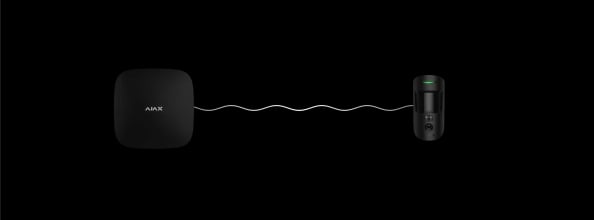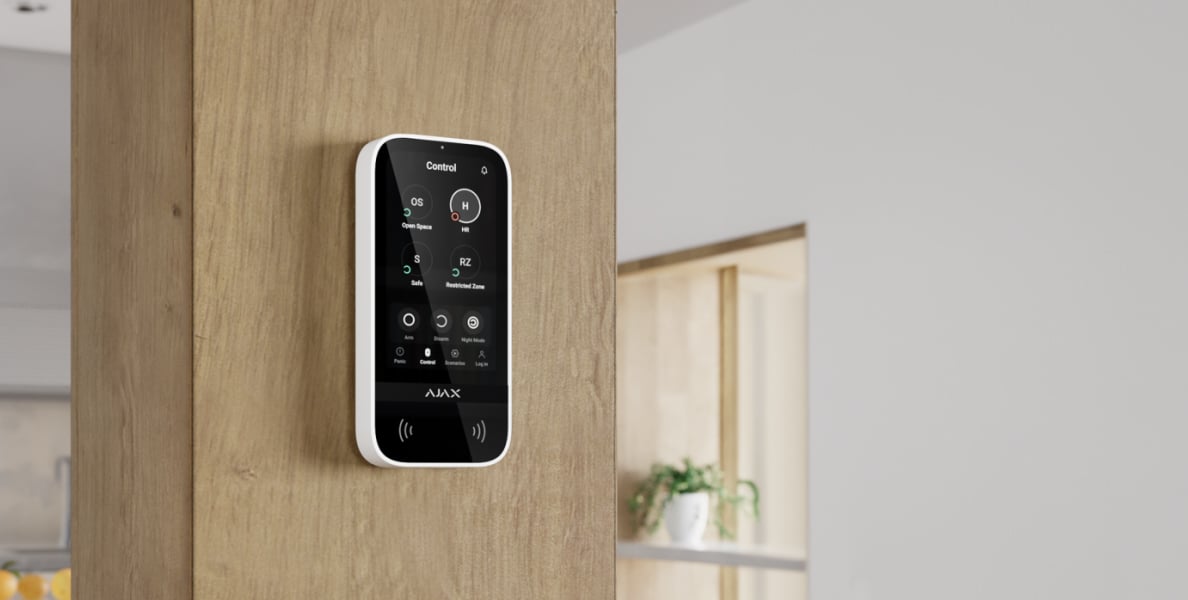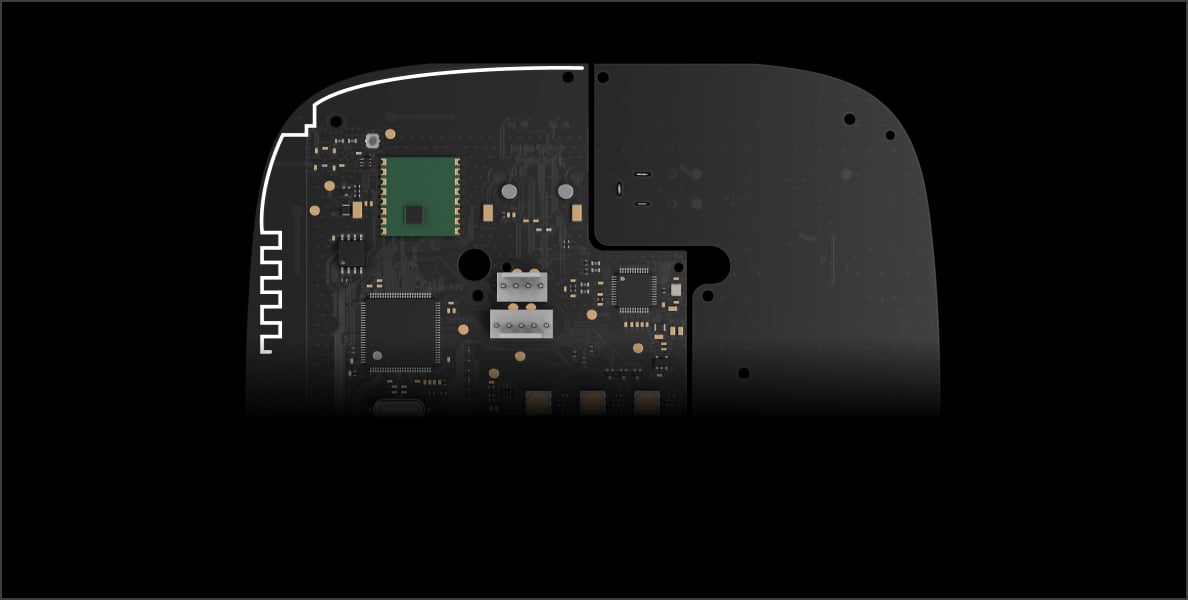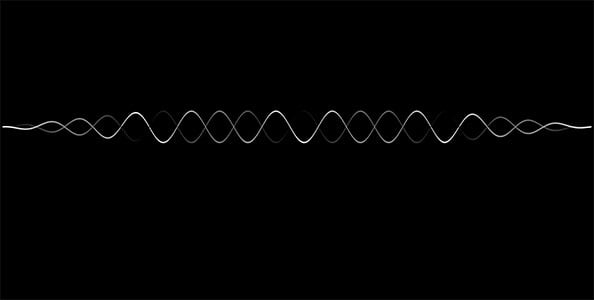
Ajax radio protocols
This page explains factors that affect the quality of radio communication and technologies that enable Ajax devices to consistently transmit events and alarms with photo verification over long distances.
Jeweller
Using polling, Jeweller displays the real-time device status and transmits alarms, events, and all measured readings to the Ajax apps. It features encryption and authentication to prevent spoofing.
Wings
Serving as a backup communication channel, Wings is designed to transfer large data packets, primarily for individual settings such as interface languages and firmware updates.
Maximum range
Radio communication transmits data via radio waves. Under ideal conditions, there are no obstacles or interference in the path of the waves, and they move from the transmitter to the receiver using the shortest path. Open space conditions provide the maximum communication range. This range serves as a generally accepted benchmark for comparing the capabilities of radio technologies and equipment using radio communications.
Jeweller and Wings radio protocols have maximum communication ranges of 2,000 and 1,700 meters, respectively.

Factors affecting the radio communication range
Obstacles
In real-life conditions, radio waves encounter obstacles. While waves pass through certain obstacles without loss and reflect from others, some obstacles absorb radio waves. The effects of obstacles depend on the material, shape, and thickness. Rain, snow, dust, even very humid air, while often be insignificant, still act as obstacles, as do people. Generally, when radio signals encounter obstacles, they attenuate, losing some of their power.
The more obstacles a signal encounters, the shorter the data transmission range becomes. A additionally, reflected, radio waves change direction.
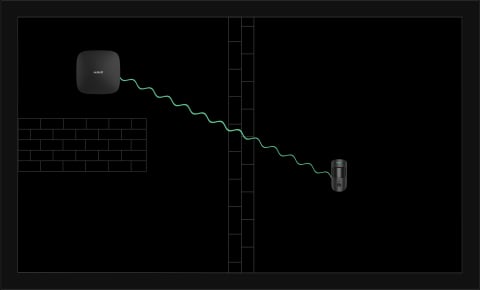
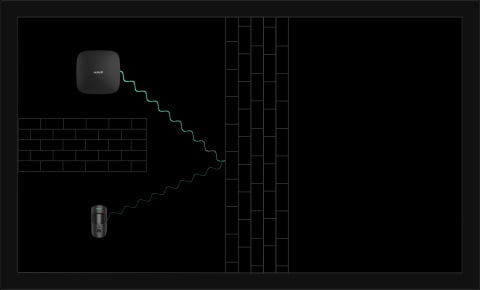
Interference
Other waves of the same frequency, as well as radio waves from the same transmitter reflected from obstacles, can create interference in the path of radio waves. Their mutual influence, known as interference, does not always lead to signal attenuation, but it usually has a negative effect.
In-phase signals are amplified

Anti-phase signals are attenuated

Jeweller and Wings radio protocols operate at 868 or 915 MHz, depending on the region of sale. These bands are much less noisy compared to Wi-Fi frequencies — 2.4 GHz and 5 GHz — as well as 433 MHz, which are used by IoT electronics, remote control units, and outdated security alarm systems.
Diffraction
Radio waves can pass through small holes without significant attenuation, a property known as diffraction.

The presence of a ventilation duct in a non-radiotransparent wall, under certain conditions, ensures stable radio communication in the adjacent room.
Effect of obstacle material on a radio signal
Depending on the material, obstacles can reflect radio waves, absorb them, thereby depriving them of some of the power, or have no effect on the radio signal. Materials that do not affect radio signals are called radiotransparent. The higher the signal absorption coefficient and the thicker the obstacle, the greater the impact on radio transmission.
Low signal absorption coefficient — up to 3 dB
50% power loss; transmission range 30% shorter
Dry red brick 90 mm thick
Gypsum board 100 mm thick
Dry wood 80 mm thick
Glass 15 mm thick
Average signal absorption coefficient — 5–20 dB
Power reduces 10 times; transmission range reduces by 60%
Brick 250 mm thick
Breeze block 200 mm thick
Concrete 100 mm thick
Masonry 200 mm thick
Signal absorption coefficient — more than 20 dB
Power reduces more than 100 times; transmission range reduces by 70%
Concrete 300 mm thick
Reinforced concrete 200 mm thick
Aluminum and steel beams
Large aquarium filled with water
Signal strength reduction to 10%
Obstacles reflecting signals
At our frequencies, an object with a straight surface and a size of at least 30 × 30 cm will reflect the signal.
Mirror
Metal
All surfaces reflect radio signals to some extent. However, metals and mirrors do so to a greater extent.
Calculating the radio communication range of Ajax devices
No theory — just practical trials with devices from retail distribution. The trials are conducted at a test site with minimal radio noise and favorable weather conditions. A constant exchange of data between the hub and the device is maintained, with the distance between them gradually increasing. As soon as the hub ceases to acknowledge the reception of events, the communication range is recorded. After confirming the value with multiple tests, the device is assigned the "communication range" characteristic.
This approach is the industry standard for determining communication range and is required to compare devices within the same manufacturer's product line as well as competing solutions from different manufacturers.
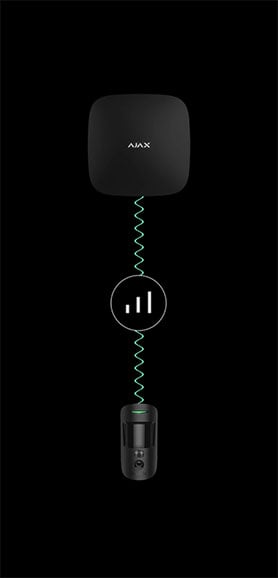
Radio communication range calculator
Why Ajax devices have different radio communication ranges
On the device side, the data transmission range depends on the transmitter’s signal strength, antenna parameters, and receiver sensitivity. Jeweller and Wings radio protocols ensure two-way communication between devices. Therefore, each device both transmits and receives signals.

Detectors, relays, and other Ajax devices have different hardware components and antennas, different enclosure materials, and different power consumption — each factor affects the maximum range of data transmission and reception.

When assessing the communication range between two devices, one should focus on the device with the smaller maximum communication range. For example, if Hub has a range of 2,000 meters, and MotionProtect has a range of 1,700 meters, these devices will be able to exchange data at a distance of up to 1,700 meters.
The radio communication range of an Ajax device is indicated on the packaging, in the user manual, and on the product page on the official website.

Ensuring the reliability of radio communication in Ajax systems
